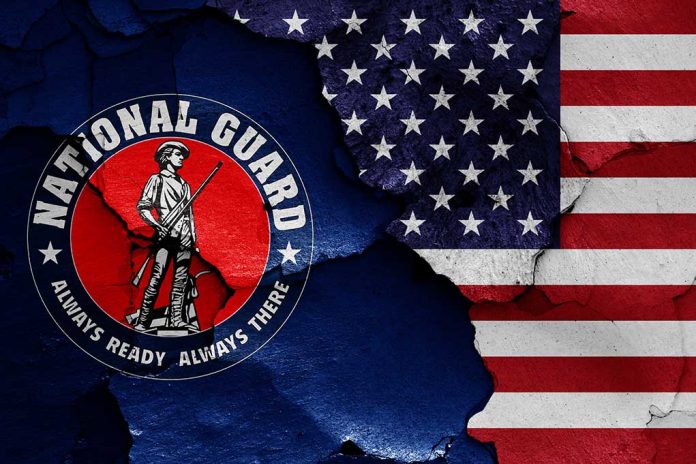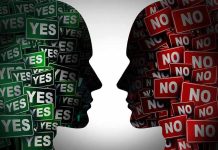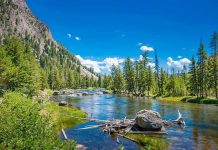
President Trump’s deployment of the National Guard to quell violent protests in Los Angeles has sparked a direct confrontation with California Governor Gavin Newsom, who called the federal intervention a “serious breach of state sovereignty.”
Key Takeaways
- President Trump authorized 2,000 National Guard troops to Los Angeles amid escalating protests and violence, with troops already positioned in downtown areas.
- California Governor Gavin Newsom has publicly challenged the deployment, even daring Trump’s border czar Tom Homan to arrest him for opposing federal immigration enforcement.
- Protesters blocked major freeways, set self-driving Waymo cars on fire, and engaged in vandalism, resulting in at least 56 arrests.
- Law enforcement used tear gas, rubber bullets, and flash bangs to control crowds after declaring an unlawful assembly.
- This marks the first time in decades a state’s National Guard was activated without the governor’s request, with Trump citing legal provisions related to rebellion.
Trump Takes Bold Action Against Escalating Violence
President Donald Trump has deployed National Guard troops to Los Angeles following days of increasingly violent protests that have seen major highways blocked, vehicles set ablaze, and widespread vandalism. The U.S. Northern Command confirmed that California National Guard personnel “are already on the ground” in Los Angeles, with military photographs showing troop formations within a downtown government compound that includes the Metropolitan Detention Center. This decisive action comes as local law enforcement struggled to maintain order amid demonstrations that have drawn thousands of protesters.
The president cited legal provisions allowing federal deployment of military personnel in cases of rebellion, authorizing 2,000 National Guard members to restore order. Additionally, about 500 Marines have been placed on standby at Twentynine Palms, signaling the administration’s commitment to establishing control over the deteriorating situation. LAPD Chief Jim McDonnell acknowledged the federal government’s authority while emphasizing his department’s focus on maintaining order without escalation, stating, “Federal authorities have the right to be able to do what they’re doing.”
The US President has ordered the deployment of 2,000 National Guard troops to Los Angeles to help control the unrest.
Protests against ICE arrests of "illegal immigrants" have turned violent. pic.twitter.com/1VbudySx9S
— Sprinter Observer (@SprinterObserve) June 8, 2025
State vs. Federal Authority Showdown
The deployment has triggered an unprecedented confrontation between state and federal authorities. Governor Gavin Newsom has publicly challenged the Trump administration, claiming the president simply wanted to create a “spectacle.” In a particularly defiant stance, Newsom directly confronted Trump’s border czar Tom Homan: “Trump’s border czar is threatening to arrest me for speaking out. Come and get me, tough guy,” and added, “Tom, arrest me. Let’s go.”
“This represents a serious breach of state sovereignty,” said Democratic Gov. Gavin Newsom.
This marks the first time in decades that a state’s National Guard has been activated without the governor’s request, raising significant constitutional questions about the limits of federal authority. The city of Glendale has already responded by ending its agreement to hold federal immigration detainees, citing the divisive public perception of the enforcement actions. Meanwhile, Homeland Security Secretary Kristi Noem has defended the deployment, noting that National Guard troops are specifically trained for crowd control situations.
Protests Turn Violent as Federal Response Intensifies
The demonstrations have grown increasingly chaotic, with protesters blocking major freeways and engaging in destructive behavior including setting self-driving Waymo vehicles on fire. Law enforcement has employed tear gas, rubber bullets, and flash bangs to disperse crowds after declaring an unlawful assembly. At least 56 people have been arrested on charges including failure to disperse, while a van driver was taken into custody after allegedly veering toward protesters with reports of gunfire from the vehicle.
“An act of violence, whether toward officers, demonstrators or the public, will be met with swift and lawful action,” said LAPD Chief Jim McDonnell.
President Trump has directed his Cabinet to take actions to “liberate Los Angeles” from what he termed a “Migrant Invasion,” characterizing some protesters as “violent people.” FBI Deputy Director Dan Bongino has issued warnings about investigations into violence against federal officers, while political organization 50501 is planning nationwide protests in solidarity with Los Angeles. Amnesty International and other organizations have condemned the use of military force, viewing it as an attempt to suppress legitimate dissent rather than restore order.
Political Fallout Continues
The situation has drawn sharp political responses from across the spectrum. Former Vice President Kamala Harris criticized the immigration arrests and Guard deployment as part of a “cruel, calculated agenda to spread panic and division.” Meanwhile, many conservative supporters view the president’s actions as necessary to restore law and order in a city experiencing dangerous levels of unrest. With protests expected to continue and the National Guard now firmly established in Los Angeles, tensions between state and federal authorities show no signs of diminishing.
“National Guard troops were confirmed to be in Los Angeles after President Donald Trump ordered their deployment over the weekend, following days of protests and riots in the city,” stated U.S. Northern Command.
The deployment represents a significant escalation in the administration’s approach to immigration enforcement and civil unrest. As additional National Guard units continue to mobilize in the coming days, the situation remains fluid, with both sides appearing unwilling to back down. What began as protests against immigration enforcement has evolved into a constitutional standoff with far-reaching implications for federal-state relations and presidential authority during domestic disturbances.







